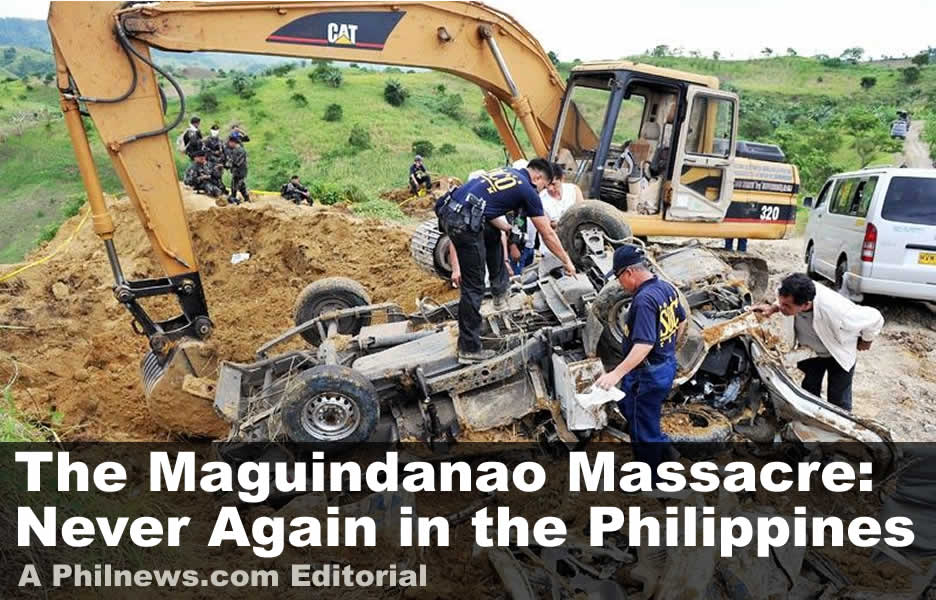 Police investigators at the scene of the massacre in 2009. Photo: AFP/philstar.com
Police investigators at the scene of the massacre in 2009. Photo: AFP/philstar.com

n the afternoon of November 23, 2009, Buluan vice mayor Esmael Mangudadatu who had decided to run for governor of Maguindanao in 2010, sent his wife, Genalyn, to the COMELEC provincial office in Shariff Aguak to file his certificate of candidacy. Accompanying Genalyn were Mangudadatu’s three sisters, other relatives, and family associates, to make a total of eleven individuals in the group.
Mangudadatu had already been warned that he would be “chopped to pieces” if and when he filed his certificate of candidacy. So he invited members of the media to accompany his wife to the COMELEC office. Thirty-four journalists went with Genalyn’s group that day.
On a desolate stretch of road 10 km outside the city of Shariff Aguak, the convoy of six vehicles was ambushed by about a hundred heavily-armed men lead by Andal Ampatuan Jr. Most women were raped before being killed, many of them shot in the genitals. The men all executed as well. There were no survivors from the six vehicles ambushed that day. In addition, five individuals from two cars that happened to be driving close to the convoy were murdered as well.
The brazenness with which the Ampatuans and other political clans with private militias operate in the country is a testament to the dysfunction and corruption that still permeates all levels of Philippine society. Andal Sr. got his political start during the Cory Aquino administration, but the Ampatuan clan reached its zenith of power and influence during the decade-long Gloria Arroyo administration. So long as Andal Sr. and his clan delivered the votes during elections, it seemed that the Arroyo administration was more than willing to look the other way.
During Arroyo’s term of office, the wealth, the dozens of mansions, and the well-armed private army of the Ampatuans were simply impossible to overlook. An article by Human Rights Watch (HRW) in 2010, a few months after the massacre, noted that the gruesome event “focused international attention on ruling families like the Ampatuans, and the lawlessness that persists in much of the Philippines. Less scrutinized than the violence itself, however, but ultimately of greater significance, is the support that the national government provides such families throughout the country, and the near total impunity that their abusive militias enjoy.”
Presidential spokesperson Salvador Panelo can rightly complain about the injustice suffered by the 46 acquitted defendants, who had endured a decade behind bars despite their innocence. However, the Duterte administration should likewise investigate the former Arroyo administration for criminal negligence—negligence that allowed the Ampatuans to become exceedingly wealthy and powerful and rule Maguindanao like despots.
Rather than continue coddling other Ampatuan-like warlords, those clans should be confronted head-on. The Duterte administration should remove any support they receive from the national government, the police, and the military. The 2010 HRW article also noted that “in the aftermath of the Maguindanao massacre, investigators recovered at least 1000 weapons in and around the homes of Andal Ampatuan, Sr. and Jr., including anti-tank weapons, mortars, machine guns, automatic pistols, and sniper and assault rifles, as well as tens of thousands of rounds of ammunition. Ampatuan-family insiders and police officers investigating the massacre say that the military and police provided the Ampatuans with most of these weapons.”
If Duterte can successfully de-fang the country’s regional warlords, it would go a long way in making sure that another Maguindanao Massacre never happens again. Published 12/22/2019
|